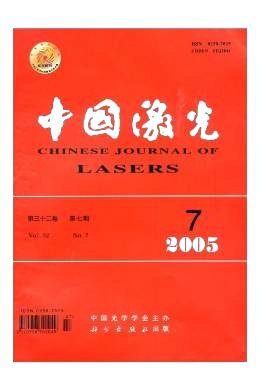中国激光, 2005, 32 (7): 973, 网络出版: 2006-06-01
钛宝石中子辐照色心的研究
Investigations of Neutron-Induced Color Centers in Ti-Doped Sapphire Crystals
激光材料 钛宝石 中子辐照 色心 热释光 laser materials Ti-doped sapphire neutrons irradiation color center thermoluminescence
摘要
研究了中子辐照下钛宝石单晶体缺陷的形成及光学性能的变化。对温度梯度法(TGT)生长的钛宝石晶体进行中子辐照,中子能量为1.5 MeV,剂量为4.32×1016 neutrons/cm2。辐照后194 nm吸收峰强度增加,268 nm吸收峰强度则降低。荧光谱检测中发现辐照使得420 nm荧光峰强度明显降低,荧光峰位置也蓝移至414 nm处。分析表明辐照使得钛宝石晶体内形成F+缺陷,同时Ti4+离子则转化成Ti3+离子。辐照后的钛宝石在247 ℃处有热释光TL出现,通过初始上升法计算出其陷阱深度为0.63 eV。该热释光的产生与辐照形成的色心有关,但由于钛离子的猝灭效应使得钛宝石的热释光强度较低。
Abstract
Neutron-irradiation induced optical properties changes and defects formation in Ti-doped sapphire crystals were studied. Temperature gradient technique (TGT) grown Ti-doped sapphire crystals were irradiated by 1.5 MeV neutrons with a dose of 4.32×1016 neutrons/cm2. Absorption, emission and excitation spectra were presented. The 194-nm absorption band intensity enhanced and the 268-nm band weakened after irradiation. And the 420-nm luminescence band weakened and blue shifted to 414-nm. The results indicated that F+-type centers formed and the valence state of titanium switched from quadrivalent to trivalent during irradiation. Thermoluminescence (TL) was observed at 247℃ and assigned to irradiation-induced color centers. The thermoluminescence trap depth is 0.63 eV calculated with initial elevation method, and the lower thermoluminescence intensity is ascribed to the quenching effect of Ti ions.
蒋成勇, 周国清, 徐军. 钛宝石中子辐照色心的研究[J]. 中国激光, 2005, 32(7): 973. 蒋成勇, 周国清, 徐军. Investigations of Neutron-Induced Color Centers in Ti-Doped Sapphire Crystals[J]. Chinese Journal of Lasers, 2005, 32(7): 973.





